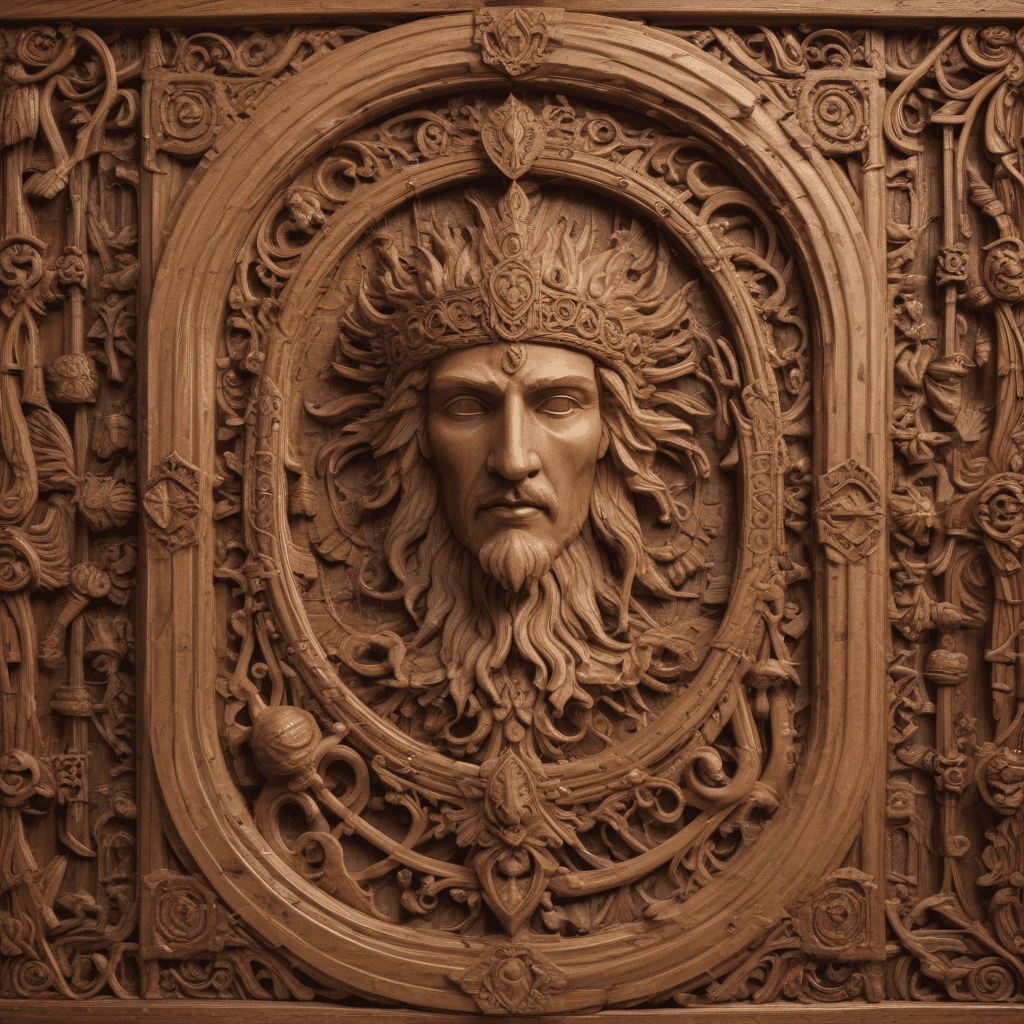Introduction
Slavic mythology, the rich tapestry of beliefs and legends of the Slavic peoples, holds a profound reverence for the art of woodworking and carpentry. From the earliest days of Slavic history, wood has been an essential material, deeply intertwined with the cultural, spiritual, and practical aspects of Slavic life.
Historical Context: The Role of Wood in Slavic Culture
For the ancient Slavs, wood was more than just a material; it possessed symbolic and mythological significance. Forests were considered sacred, inhabited by spirits and deities. Trees were believed to hold wisdom, power, and healing properties. Wood was used for various purposes, including construction, crafting tools, weapons, musical instruments, and religious objects.
The Importance of Woodworking in Slavic Mythology
In Slavic mythology, woodworking was regarded as a sacred art form. Craftsmen who worked with wood were highly respected and often seen as possessing special skills and knowledge. The act of creating something from wood was believed to hold divine power, connecting the craftsman to the natural world and the realm of the gods.
The Craftsman in Slavic Folklore and Mythology
Slavic folklore and mythology are replete with tales of skilled craftsmen. One of the most famous is the legendary blacksmith Svarog, who was credited with forging the sun and other heavenly bodies. Other figures, such as the woodcarver Luban, were renowned for their exceptional craftsmanship and ability to create stunning works of art from wood.
Woodworking as a Ritualistic Practice
Woodworking was not merely a practical skill but also a ritualistic practice. The process of selecting the right wood, carving it, and assembling it was often accompanied by prayers, incantations, and offerings to the gods. The finished product was believed to carry the spiritual essence of the craftsman and the power of the wood itself.
Symbolic Meanings of Wood and Its Properties
In Slavic mythology, wood was not just a material but a symbol of life, fertility, and renewal. Different types of wood were associated with specific deities, spirits, and qualities. For example, oak was considered sacred to Perun, the god of thunder, and was believed to possess protective powers. Birch was associated with the goddess Bereginya, the protector of women and children.
The Carpentry Techniques of Slavic Craftsmen
Slavic carpenters employed various techniques to create their intricate works of art. They used hand tools such as axes, adzes, chisels, and gouges. They developed specialized joints and construction methods that ensured the durability and strength of their creations. Their skill in woodworking is evident in the surviving examples of Slavic architecture, such as churches, houses, and bridges.
The Legacy of Slavic Woodworking in Architecture and Furniture
The legacy of Slavic woodworking can be seen in the architecture and furniture of many Slavic countries. Traditional Slavic houses are often made of wood, featuring intricate carvings and decorative elements. Slavic furniture is known for its durability, functionality, and aesthetic appeal. The influence of Slavic woodworking can also be seen in modern architecture and design.
Contemporary Interpretations of Slavic Woodworking
In recent years, there has been a resurgence of interest in Slavic woodworking. Contemporary artists and craftspeople are reinterpreting traditional Slavic techniques and motifs in their work. This revival has led to the creation of stunning pieces of art, furniture, and other objects that celebrate the rich heritage of Slavic woodworking.
Conclusion: The Significance of Woodworking in Slavic Heritage
Woodworking has been an integral part of Slavic culture for centuries. It has played a vital role in Slavic mythology, folklore, and practical life. The skills and knowledge of Slavic woodworkers have been passed down through generations, ensuring the survival of this ancient art form. Today, Slavic woodworking continues to inspire and captivate, serving as a reminder of the rich cultural heritage of the Slavic peoples.
FAQ
What is the significance of wood in Slavic mythology?
Wood was considered sacred by the ancient Slavs, possessing symbolic and mythological meanings. It was associated with life, fertility, renewal, and protection.
Who were some of the famous craftsmen in Slavic folklore and mythology?
Svarog, the blacksmith, and Luban, the woodcarver, are two of the most well-known craftsmen in Slavic folklore and mythology.
How did Slavic carpenters construct their buildings?
Slavic carpenters used hand tools and specialized joints and construction methods to create durable and strong buildings.
What is the legacy of Slavic woodworking?
The legacy of Slavic woodworking can be seen in the architecture and furniture of many Slavic countries. Traditional Slavic houses and furniture are known for their intricate carvings, durability, and aesthetic appeal.
Are there any contemporary interpretations of Slavic woodworking?
Yes, there has been a resurgence of interest in Slavic woodworking in recent years. Contemporary artists and craftspeople are reinterpreting traditional Slavic techniques and motifs in their work, creating stunning pieces of art, furniture, and other objects that celebrate the rich heritage of Slavic woodworking.



